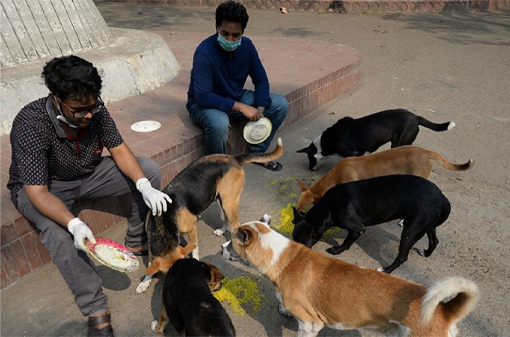Caring for stray animals in winter

- Update Time : Saturday, 20 January, 2024, 04:46 pm
- 140 Time View

Online Desk: As winter’s icy grip tightens its hold, the plight of street animals becomes increasingly challenging. While the common belief is that dogs are resilient to cold, the reality is that the harsh winter conditions can pose serious threats to their well-being, especially for the young, elderly, or those with thin fur.
Beyond the conventional approach of providing sweaters and makeshift shelters, communities can adopt additional effective measures to ensure our furry companions’ welfare during extreme winters.
Community collaboration for warmth: A collective effort within the community can make winters more bearable for street animals. Months before the onset of winter, encourage community members to pool together and donate old sweaters, jackets, and coats. This joint initiative can significantly contribute to providing much-needed warmth to our four-legged friends.
Nutrient-dense nutrition: Cold weather demands additional calories for animals to stay warm. As part of community care, ensure that street animals have access to healthy, nutrient-dense food. This proactive measure addresses their hunger and helps them combat the chilling temperatures.
Hydration matters: In winter, access to clean water is crucial for street animals. Regularly check water sources to prevent contamination, ensuring that these animals have a reliable water supply. Hydration is key to their well-being and aids in maintaining body temperature.
Innovative makeshift shelters: Beyond traditional makeshift accommodations, explore innovative solutions using old blankets, boxes, crates, and cardboard. Consider incorporating straw or hay on the ground to provide insulation against the cold. These warm surfaces can make a significant difference in shielding animals from freezing temperatures.
Health monitoring and veterinary care: Vigilance is essential during winter. Keep a watchful eye on street animals for signs of distress or illness. Young, old, and already sick animals are particularly vulnerable to hypothermia. Establish a network with local animal shelters, rescue organisations, and veterinarians to promptly address any health concerns.
Empowering communities: Organise and mobilise community efforts to care for street animals during winter collectively. Create awareness through regular volunteer meets, educating community members about these animals’ unique challenges in the cold. Encourage participation, especially from young people and children, fostering a sense of responsibility towards animal welfare.
The country is facing mild to severe cold waves, the temperature is falling below the 15-degree Celsius mark, and we are even witnessing rainfall in some areas. Stray dogs and cats are very much part of the society we live in. Hence, they deserve shelter and other protective measures during this coldest period of the year.
















